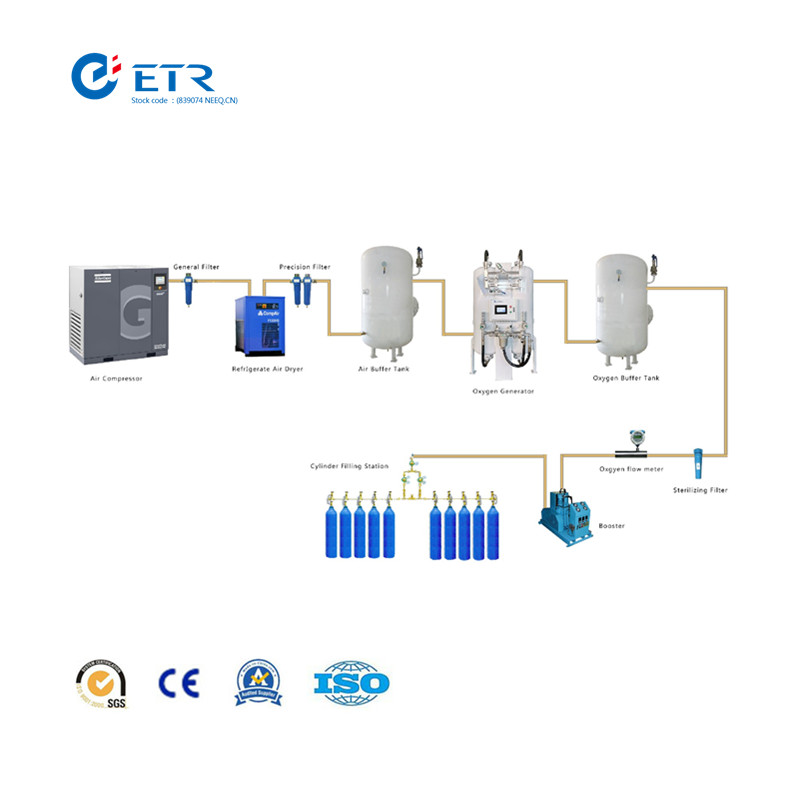The newborn puppies who have eaten colostrum have no hair on their body surface, their eyes are closed, their ears are obstructed, their body temperature regulation ability is poor, their digestive organs development is not complete, and the colostrum secreted by the female rabbits within 1~2 days after delivery contains a lot of The antibodies and trace elements also have a laxative effect, which is conducive to promoting the growth of pups and eliminating meconium. Therefore, the rabbit can eat colostrum in time and sleep well, and it can ensure its normal growth and development. Some female rabbits, especially the first-born female rabbits, are not strong enough to nurse their babies after giving birth. In this case, the female rabbit should be fixed in the nest box to keep it quiet, and the young rabbit should be placed beside the nipple of the female rabbit and allowed to lick the milk freely for 4 to 5 times a day.
Timely implementation of foster care and artificial breastfeeding in rabbits In actual production, it often happens that there is a large difference in the number of litter mates. To this end, we must do a good job of adjusting and fostering young rabbits. Normal lactating female rabbits can breed 6 to 8 rabbits. The fostering method is to take the puppies with similar birth dates (not more than 2 or 3 days), take them out of the nest box, and divide the nests according to their size and size, and then apply a few drops of female rabbits on the pups. The milk or urine disturbs the sense of smell and prevents the female rabbit from refusing to foster and bite or bite the pups. If the female rabbit is born, the female rabbit has died, there is no milk, or if she has breast disease and she cannot breastfeed. If the female rabbit is not fostered, use artificial feeding. Replace the female colostrum with milk, goat milk or condensed milk. Where conditions permit the use of fresh milk 200 ml, add 3 ml of cod liver oil, 2 grams of salt, 1 fresh egg, boiled and sterilized after mixing evenly, and then cool to 37°C~38°C to feed the pups. Can also be used instead of soy milk, rice soup plus appropriate salt, the temperature is maintained at 37 °C ~ 38 °C. A glass dropper or syringe can be used for feeding, allowing it to freely suck.
In time, the feed rabbits grow rapidly after opening their eyes, and breast milk has begun to decrease, which can not meet the nutritional needs of the young rabbits. Therefore, puppies should start feeding at 16 to 18 days of age. Supplementary feed should be nutrient-rich, easily digestible soy milk, bean dregs or chopped young grass, leaves, etc. Feeding should be less frequent meals, 5 to 6 times a day. After 20 days of age, appropriate cereals, bran, corn flour, and a small amount of charcoal powder, vitamins, inorganic salts, garlic, and onions can be fed to enhance the physique of the pups and reduce disease.
Weaned working rabbits have a small stomach and weak digestive power, but they have fast growth and development. After 30 days of age, they can gradually turn to feeds, supplemented by breast milk, and prepare well before weaning. The pups are usually weaned at 28 to 30 days of age, and the weaning method is generally one-time weaning, ie the whole litter puppies are separated from the female rabbit once. Another method is weaning in batches. That is, the well-developed puppies are isolated from the female rabbits, leaving poorly developed puppies isolated after the original cage is reared for a period of time. Both methods should pay attention to keeping puppies in the original cage for a period of time. Try to be as stable as possible in feed, environment, and management to prevent adverse environmental changes in weaned rabbits after weaning.
Do a good job of health and epidemic prevention Rabbit cages, rabbit houses and utensils should often be disinfected with disinfectant drugs, the ground should be kept clean and the ventilation of the rabbit house is good. In the feed should be regularly added the right amount of coccidiosis powder, chlorpheniramine, sulfamethazine and other drugs, and regular injection of the appropriate vaccine to enhance the immunity of the pups.
ETR Oxygen Cylinder Filling System
By PSA principles, ETR PSA oxygen generators generate 93%±2% purity oxygen gas directly from compressed air. ETR oxygen cylinder filling plant is consisted of Atlas Copco air compressor, Parker dryer and filters, air buffer tank, ETR Psa Oxygen Generator, oxygen buffer tank, oxygen receiver tank, diaphragm oxygen booster, filling station and control cabinet.
Compressed air is purified through the air dryer and filters to a certain level for main generator to work with. Air buffer is incorporated for smooth supply of compressed air thus to reduce fluctuation of compressed air source. The generator produces oxygen with PSA (pressure swing adsorption) technology, which is a time proven oxygen generation method. Oxygen of desired purity at 93%±2% is delivered to oxygen buffer tank for smooth supply of product gas. Oxygen in buffer tank is maintained at 4bar pressure, then reach to 150bar to filling cylinders with an oxygen booster.

Oxygen Cylinder Filling System
Oxygen Cylinder Filling System,Homefill Oxygen System,Oxygen Refilling Plant,Oxygen Refilling Station
Hunan Eter Electronic Medical Project Stock Co., Ltd. , https://www.centralgas.be